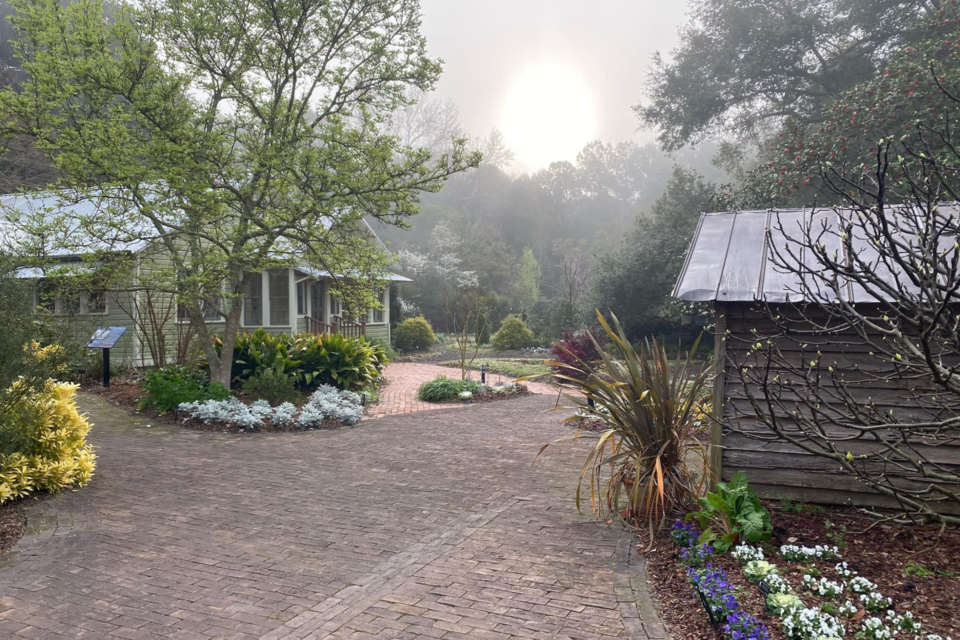Spring is upon us! If it has sprung up early this year on you, you are not alone! Joshua Jones, Garden Manager of the Botanic Garden at Georgia Southern, chatted with Grice Connect and gave some great tips to help prepare your gardening space for the warmer season.
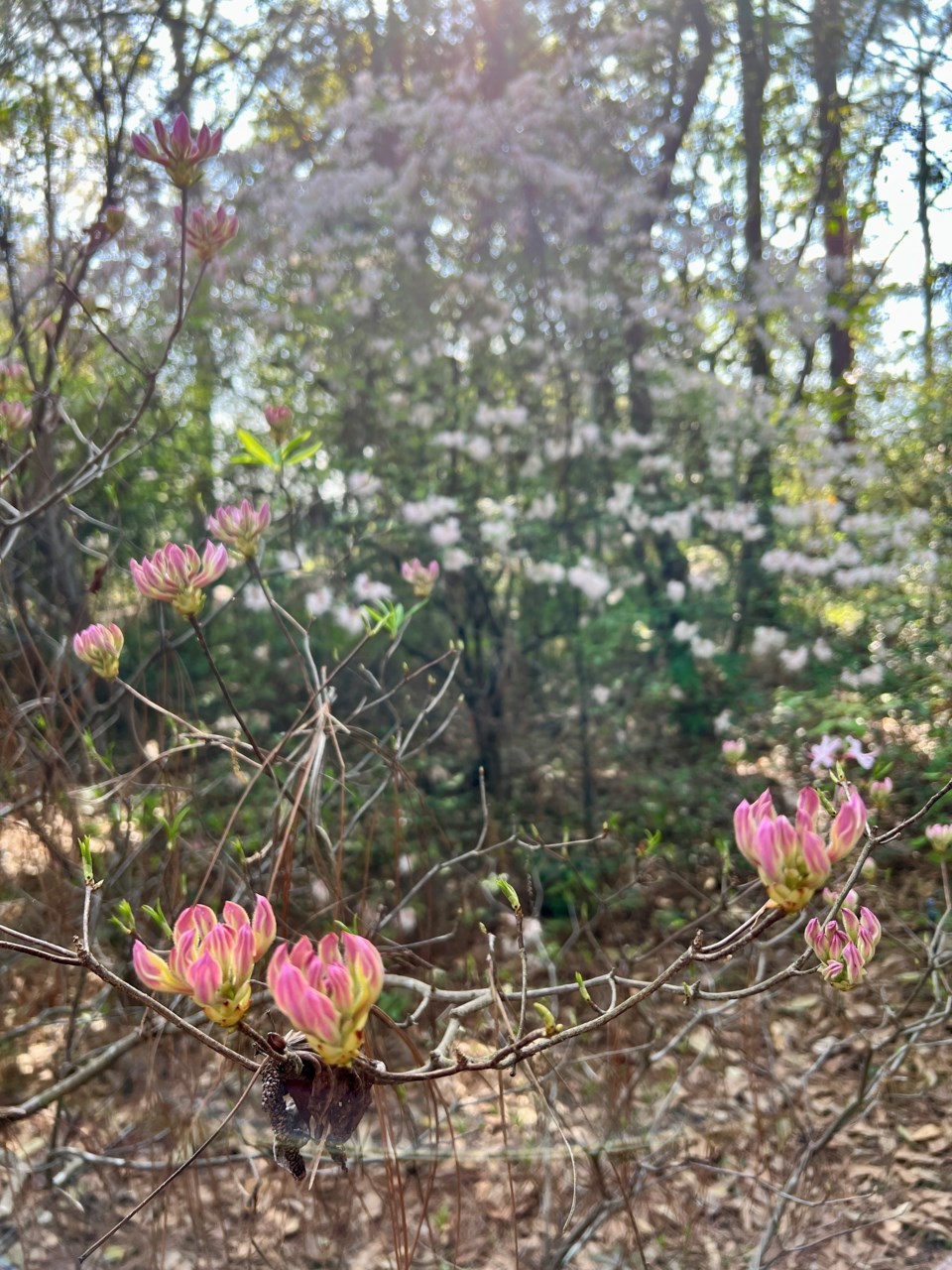
Preparing for Spring
- Clean Up Garden Beds: Remove any debris, dead foliage, and weeds from garden beds to prevent pests and diseases.
- Prune Trees and Shrubs: Prune deciduous trees and shrubs while they are dormant. Remove dead or diseased branches and correctly prune plants. Once buds begin to swell, roughly mid February it is not recommended to prune until after full leaf expansion around mid-May. It is recommended to prune camellias and azaleas after they finish flowering but no later than June to prevent removing next year's buds.
- Mulch: Apply a 2-3” layer of mulch around trees, shrubs, and perennial plants to help conserve soil moisture, suppress weeds, and provide insulation against temperature fluctuations. Do not apply mulch against the trunks or basal rosette of any plants. Stay a few inches away to prevent root crown disease and trunk disease.
- Protect Tender Plants: If your area experiences occasional freezes, protect tender plants such as citrus trees, tropicals, and sensitive perennials with frost cloth or other protective coverings.
- Plan and Order Seeds: Plan your garden layout for the upcoming growing season. Order seeds for vegetables, flowers, and herbs, and start seeds indoors for early spring planting.
- Maintain Tools: Take advantage of the slower pace in the garden to clean and sharpen your gardening tools, such as pruners, shears, and shovels, to ensure they are ready for use when spring arrives.
- Check Irrigation Systems: Inspect and maintain irrigation systems, including hoses, sprinklers, and drip lines, to ensure they are in good working order for the coming summer in Statesboro!
- Compost: Continue adding kitchen scraps and yard waste to your compost pile, keeping it moist and turning it regularly to encourage decomposition. Use finished compost to amend garden soil in the spring.
- Inspect Plants for Pests and Diseases: Take the time to closely inspect your plants for signs of pests or diseases, such as aphids, scale insects, or powdery mildew, and take appropriate measures to control them before they get out of hand.
- Planting Prep: Add compost 30 days before planting to give adequate time for the microbes to do their work for best results. Mushroom compost, worm castings, chicken manure compost, cow manure compost and fish emulsion are some favorites. Azomite is recommended to increase available minerals and micronutrients.
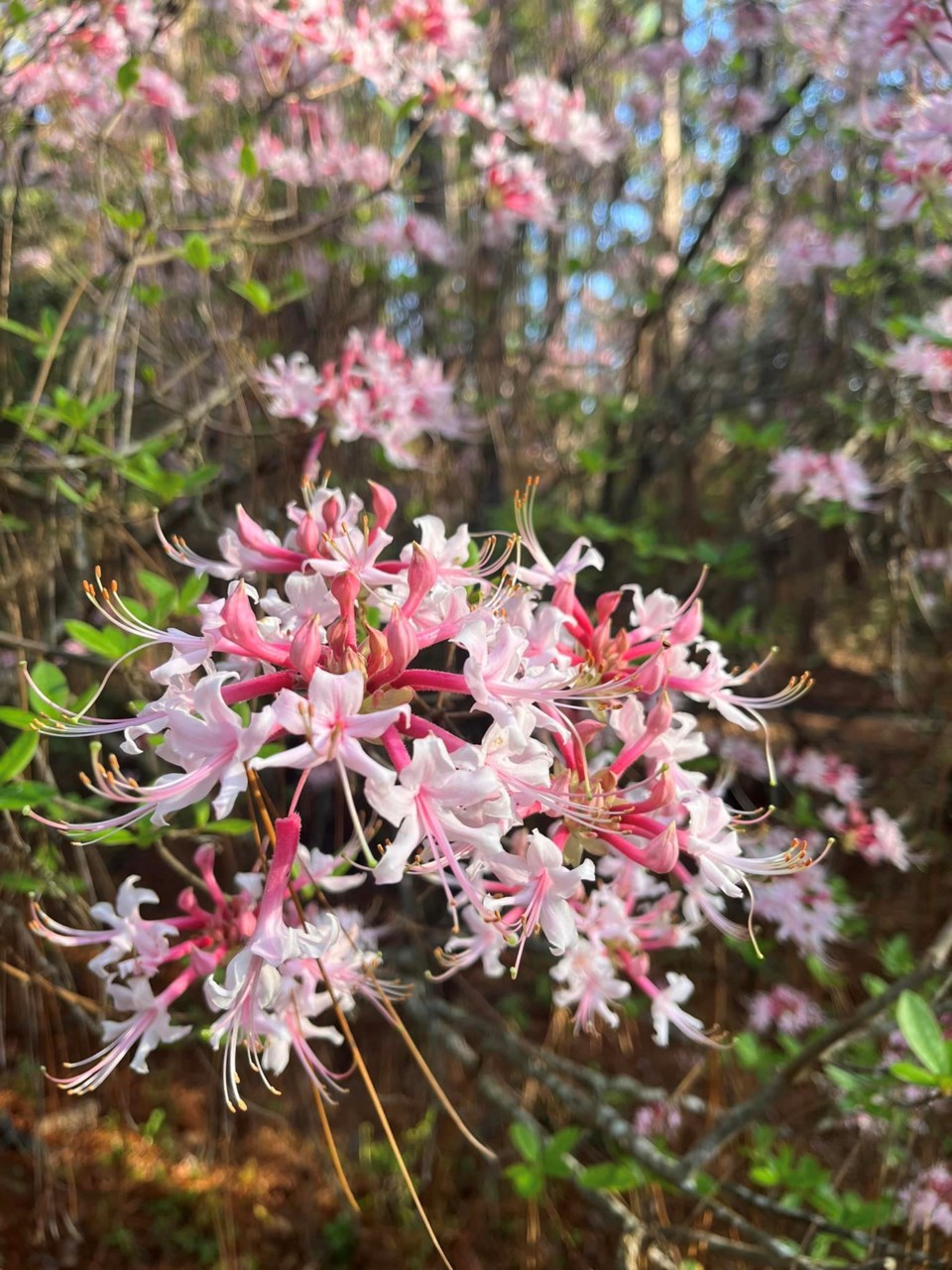
Jones also shared some of his favorite native trees and shrubs that do well in our area along with some fun facts about them.
- Sourwood (Oxydendron arboreum) - A small-medium sized deciduous tree that prefers uplands and slopes often found with hickories, maples and other acidic soil loving trees. The flowers attract many pollinators and beekeepers love this tree as the honey is world class. The fruit attracts birds and other wildlife while humans also benefit from its medicinal properties.
- Southern Magnolia (Magnolia grandiflora) - A medium-large sized evergreen tree that is naturally found in Pine Bay habitats. Known for its large, fragrant flowers, cones filled with bright red berries and glossy evergreen leaves.
- Live Oak (Quercus virginiana) - An iconic tree of the South with sprawling branches and evergreen foliage that tolerates the low-country and the storms that come with it! I consider them a fast growing oak until they mature where they can spend hundreds of years expanding and elongating.
- Eastern Redcedar (Juniperus virginiana) - Not a Cedar! A coniferous tree with dense foliage, the female trees produce the iconic juniper berries used by wildlife and humans for food, art, medicine, basketry and ceremonies, Additionally Junipers are often used for windbreaks or as ornamentals.
- American Holly (Ilex opaca) - A small to medium-sized tree with glossy green leaves, small flowers that attract many pollinators and bright red berries that attract wildlife for months.
- Red Maple (Acer rubrum) - A fast-growing deciduous tree with vibrant red fall foliage while offering a brilliant display constructed of small flowers near the start of February.
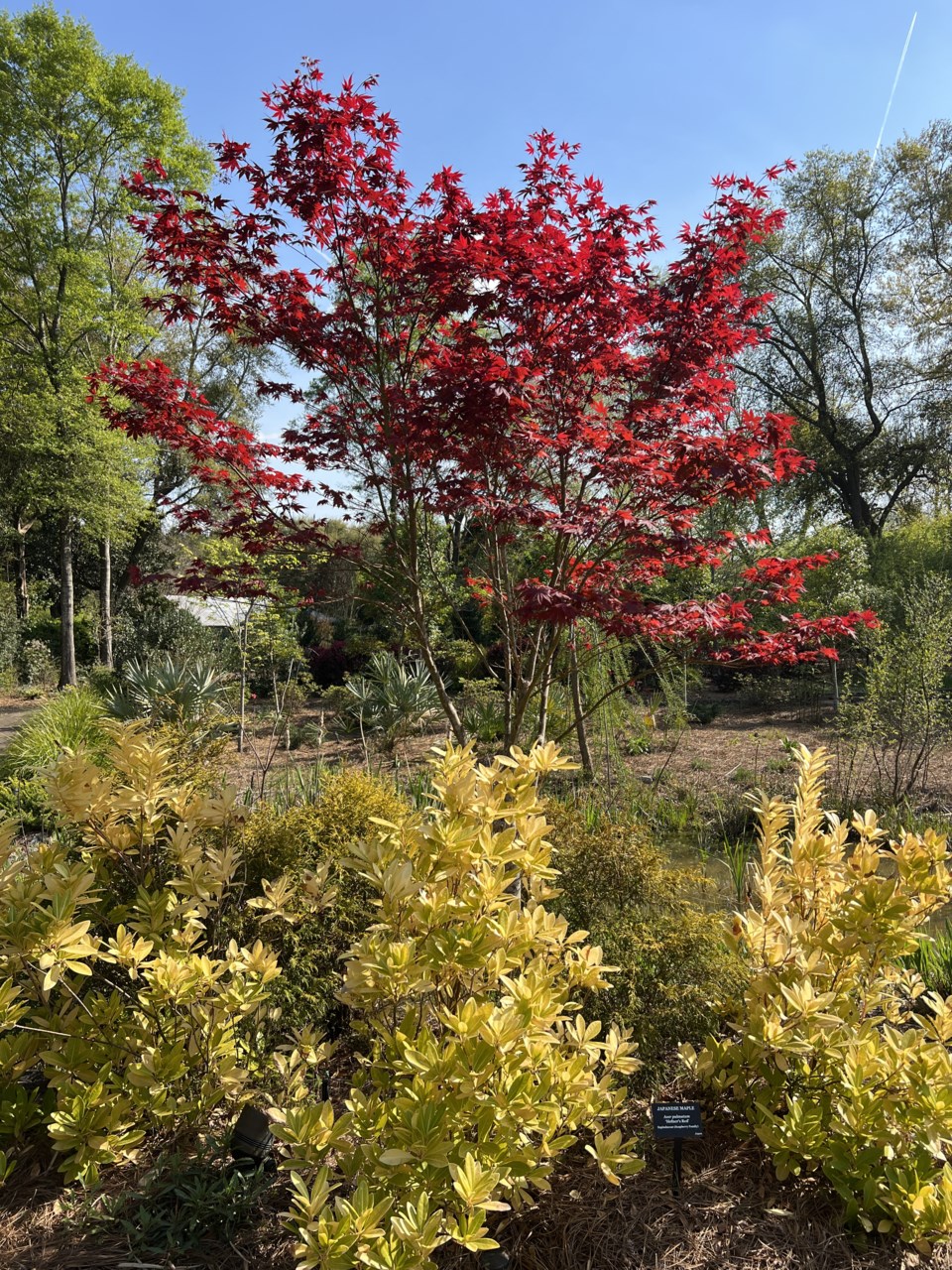
- White Oak (Quercus alba) - A towering deciduous tree with distinctive lobed leaves and acorns, providing excellent shade and wildlife habitat.
- Black Tupelo (Nyssa sylvatica) -medium sized, deciduous tree known for its brilliant fall foliage ranging from scarlet to purple. Additionally the flowers attract MANY pollinators (Tupelo Honey) and the bluish fruit attracts all manner of wildlife. Another Keystone species for Blackwater ecosystems!
- Pecan (Carya illinoinensis) - A large deciduous tree prized for its delicious nuts by humans and wildlife.
- Longleaf Pine (Pinus palustris) - A tall pine species adapted to fire-prone habitats, known for its long needles, large cones and great pine nuts that attracts wildlife.
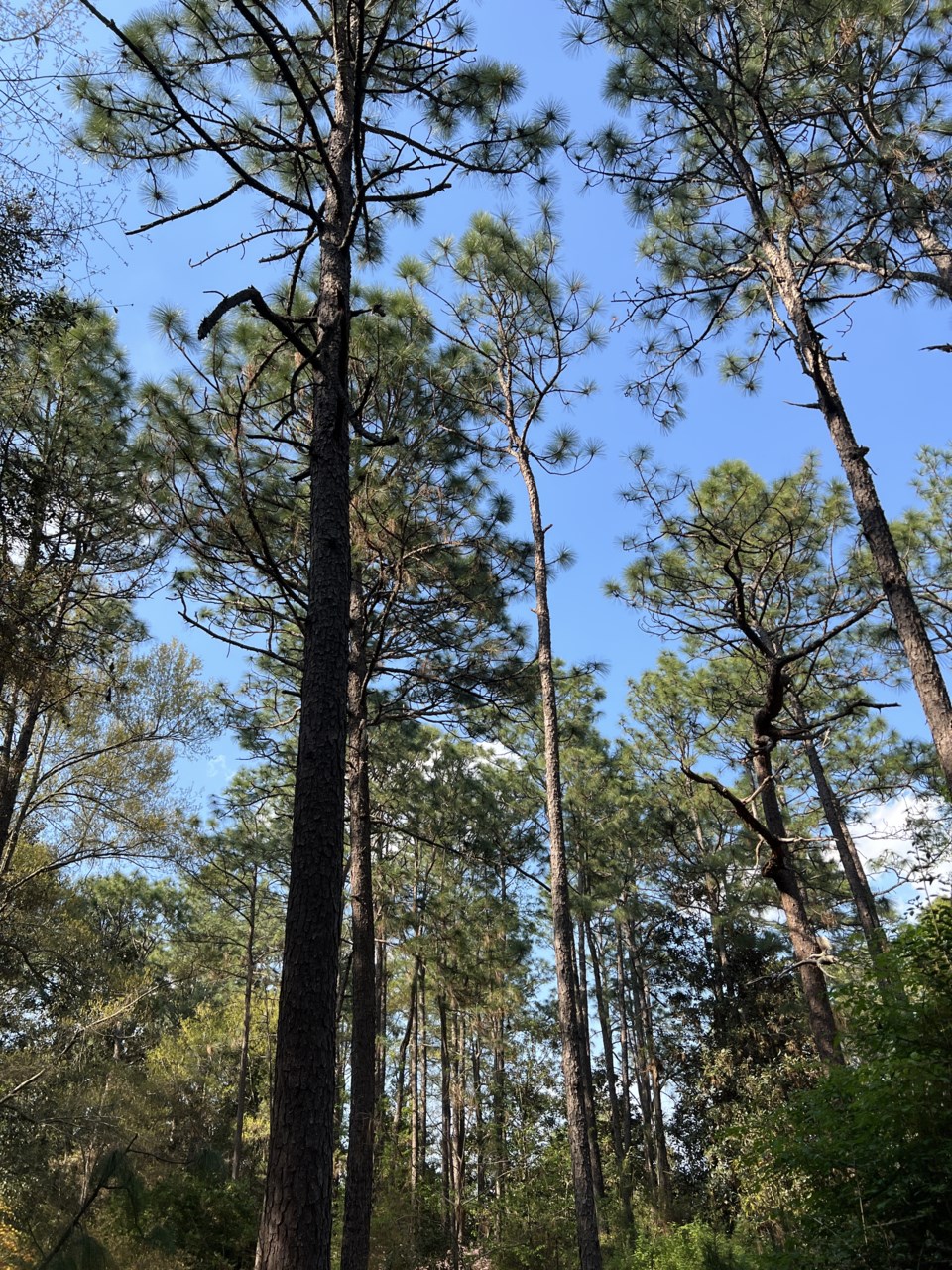
- Bald Cypress (Taxodium distichum) - A long-lived, deciduous conifer with a unique appearance, often found in swampy or waterlogged areas. Keystone species for blackwater ecosystems!
- Southern Red Oak (Quercus falcata) - A large, fast-growing, deciduous tree with bristle tipped leaves, lots of habitat and a bounty of acorns for wildlife.
- Sweetgum (Liquidambar styraciflua) - Known for its star-shaped leaves and spiky fruit balls, with vibrant fall colors and their sap also known as gum. The sap has been used for a variety of purposes, including chewing gum, perfumes, folk medicines and flavorings.
- Water Oak (Quercus nigra) - A medium-large sized deciduous tree commonly found in wetlands or near water bodies in their natural setting. Their prolific acorn production attracts a lot of birds and mammals.
- American Beech (Fagus grandifolia) - A large deciduous producing tree with smooth gray bark, attractive foliage and beechnuts for wildlife.
- Black Cherry (Prunus serotina) - A medium-sized deciduous tree with fragrant white flowers in spring and dark purple fruits. Attracts a lot of pollinators and other wildlife.
- Black Walnut (Juglans nigra) - A large deciduous tree found in moist, acidic soil valued for its beautiful wood and edible nuts that aren't produced until maturity, often as long as 20 years! It has been said that the Native Americans threw the seed husk into small bodies of water to poison fish for easy catching which I can believe as these trees are very allelopathic producing chemicals known as juglones to suppress competition under their drip line.
- American Sycamore (Platanus occidentalis) - A large, deciduous tree with distinctive mottled bark and large palmate leaves that provide much needed tall shade and habitat as well as a food source for birds and other wildlife. Moreover, as these trees age they often form cavities hosting an array of wildlife---a very fast-growing and forgiving tree that creates a beautiful form with sheathing bark resembling eucalyptus.
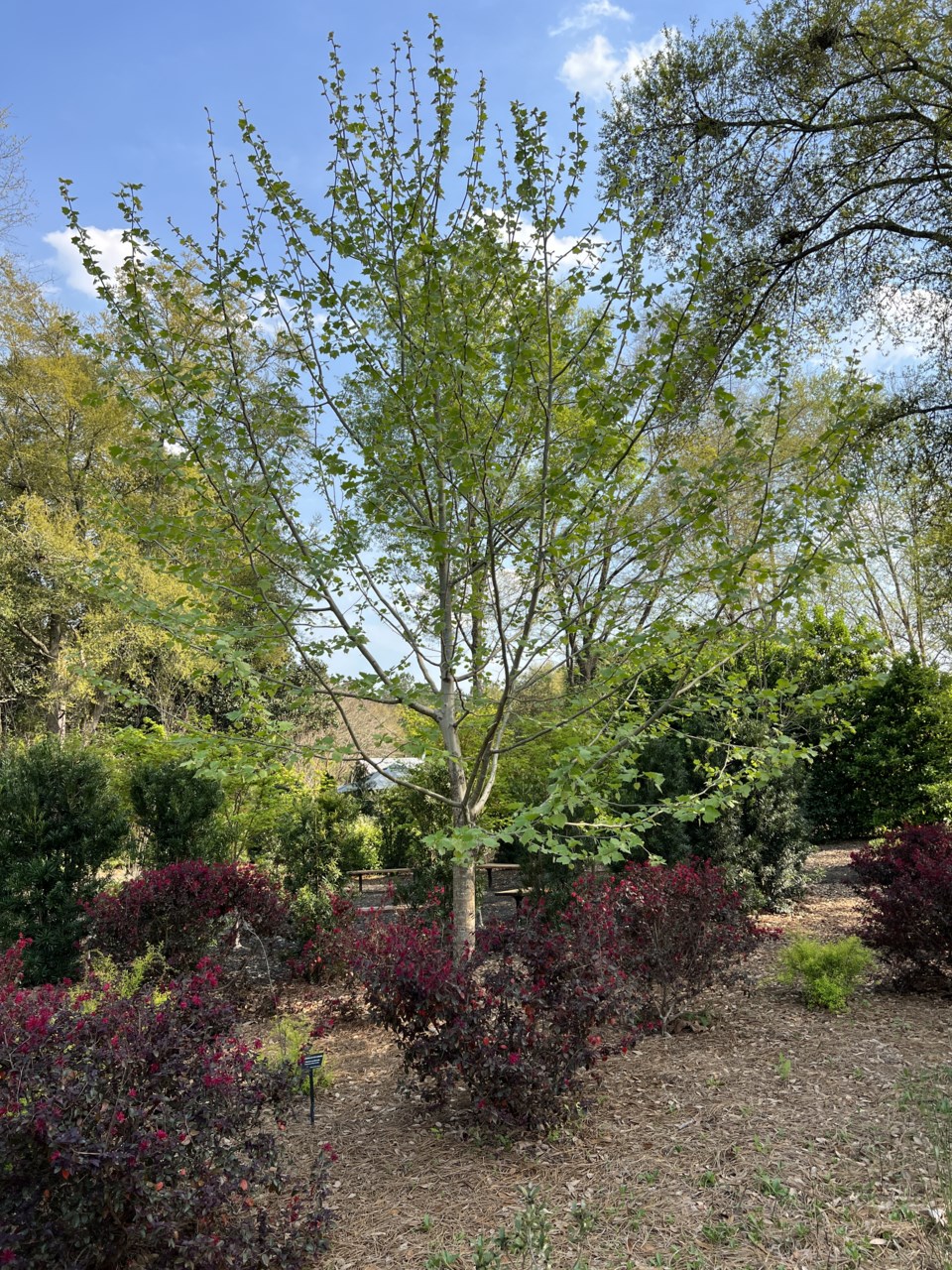
- Cucumber Magnolia (Magnolia acuminata) - A medium-large deciduous magnolia species with large, yellowish flowers that will attract every pollinator around and cucumber-shaped fruits. In our area, I recommend planting under open, tall shade trees and/or consistently moist, well-drained areas.
- American Hornbeam (Carpinus caroliniana) - Also known as Musclewood or Ironwood, a small, slow-growing deciduous tree with smooth, muscular-looking form. This tree is found as an understory in moist, rich bottomlands and its incredibly dense wood was used by natives to create bowls, tool handles and more.
- Red Buckeye (Aesculus pavia) - A large shrub or small tree found in rich, moist understories with beautiful foliage early in the season flaunting a tall red, spike of flowers that attract humming birds.
- American Beautyberry (Callicarpa americana) - Known for its clusters of vibrant purple berries in the fall, this shrub also offers delicate pink flowers in the spring.
- Dwarf Palmetto (Sabal minor) - A low-growing palm native to the southeastern United States, it's often used in landscaping for its tropical appearance.
- Oakleaf Hydrangea (Hydrangea quercifolia) - This deciduous shrub features large, showy white flower clusters and striking oak-like leaves that turn burgundy in the fall.
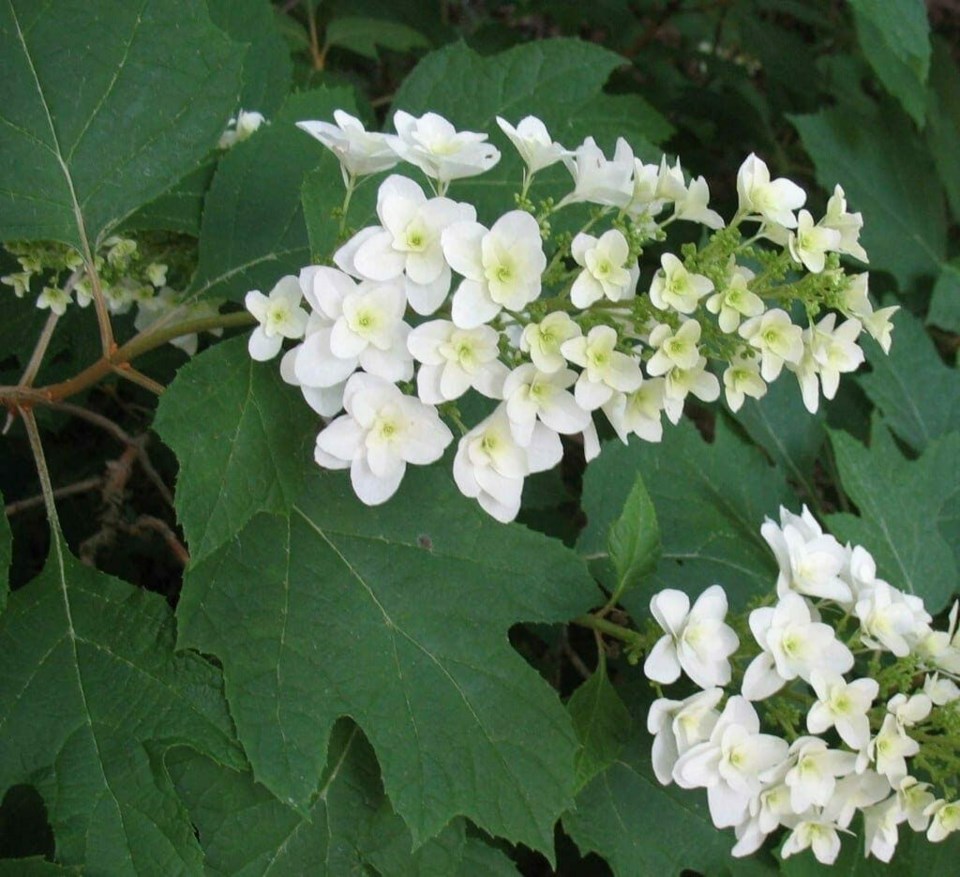
- Wax Myrtle (Morella cerifera) - A versatile evergreen shrub with aromatic foliage, it's valued for its tolerance to a variety of soil types and its ability to attract wildlife.
- Plum-Leaf Azalea (Rhododendron prunifolium) - This native azalea species thrives in shady, moist acidic conditions displaying vibrant flowers in the late summer that range from deep red, orange, pink to white, adding a splash of color to woodland gardens in the late summer! An excellent nectar source for butterflies, native bees and hummingbirds.
- Flame Azalea (Rhododendron austrinum) - This native azalea species thrives in shady, moist acidic conditions displaying brilliant yellow, fragrant flowers in the spring, adding a splash of color to woodland gardens. An excellent nectar source for butterflies, native bees and hummingbirds.
- Florida Anise (Illicium floridanum) - Known for its glossy evergreen foliage and fragrant maroon flowers, it thrives in shady, moist conditions.
- Elliott's Blueberry (Vaccinium elliottii) - A native blueberry species adapted to sandy soils, its disease resistant foliage allows it to produce delicious berries and offers attractive fall color. Attracts wildlife!
- Fetterbush (Agarista populifolia) - This large, evergreen shrub features pendulous clusters of white flowers and is well-suited to shady moist, acidic soils. Toxic if eaten. Attracts a lot of pollinators and is considered deer resistant.
- Coastal Leucothoe (Leucothoe axillaris) - A small compact evergreen shrub with drooping clusters of white flowers, it thrives in shady acidic, moist and well-drained soils. Toxic if eaten. Attracts a lot of pollinators and is considered deer resistant.
- Yaupon Holly (Ilex vomitoria) - A versatile native shrub with small, glossy leaves with females producing red berries that persist through winter, it's often used in landscaping as cultivars and for wildlife habitat and food source.
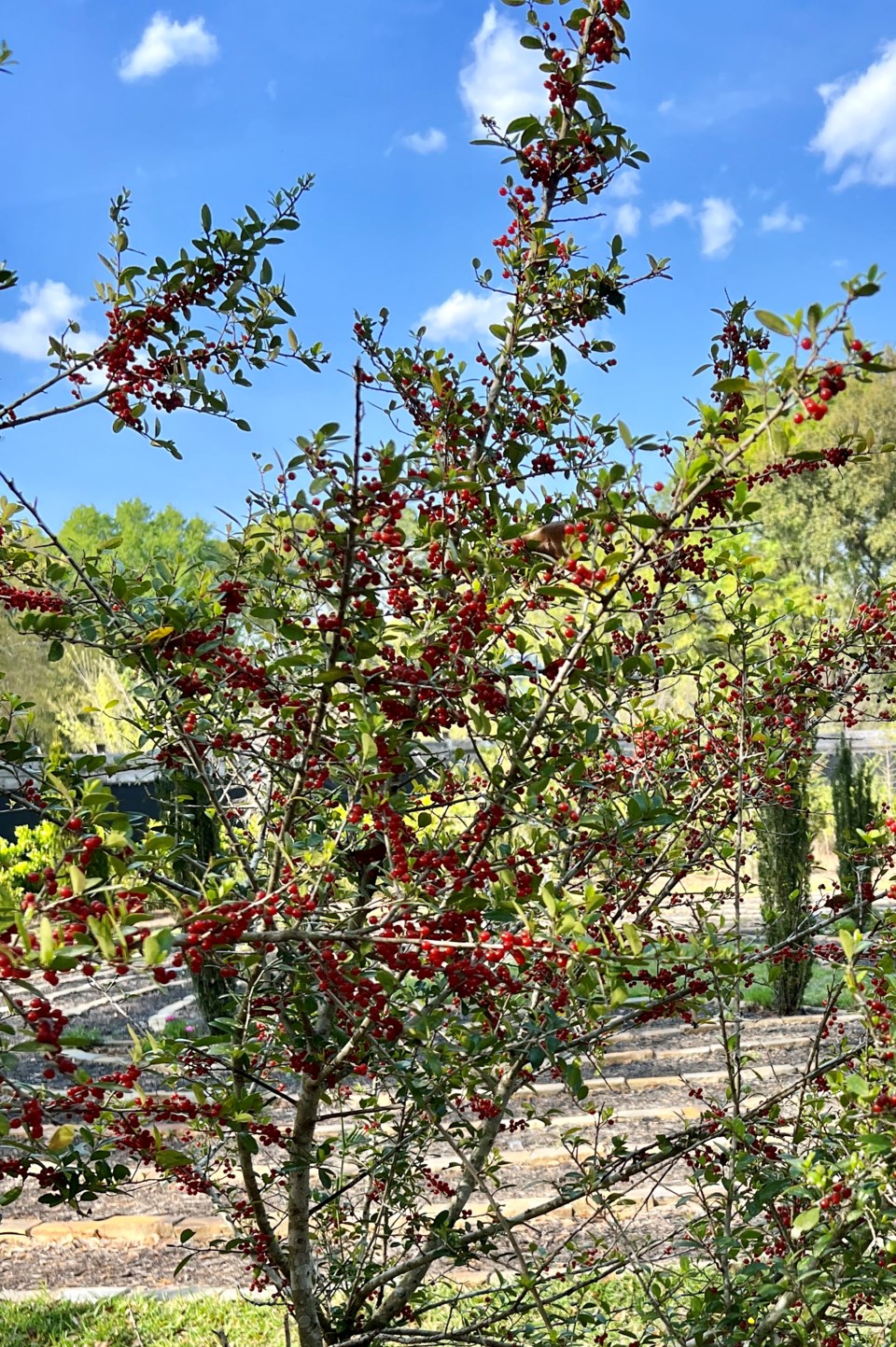
- Buttonbush (Cephalanthus occidentalis) - This deciduous shrub attracts a diverse array of pollinators with its spherical, spiky white flowers. Its love of wet and even flooded areas from shade to sun makes this a very useful and undervalued native for our area.
- Virginia Sweetspire (Itea virginica) - This deciduous shrub known for its fragrant white flower spikes in the spring and brilliant red fall foliage, it's adaptable to a variety of soil types but prefers rich moist, well-drained soil.
- Coral Honeysuckle (Lonicera sempervirens) - A twining vine that can also be trained as a shrub, it produces tubular red or orange flowers that are attractive to hummingbirds.
- Sparkleberry (Vaccinium arboreum) - A native blueberry species with glossy evergreen foliage producing excellent nesting habitat, delicious edible berries and it is well-suited to acidic, well-drained soils that are difficult for most other plants to thrive. Attracts a lot of wildlife!
- Swamp Azalea (Rhododendron viscosum) - A deciduous shrub that thrives in moist, acidic soils, it offers fragrant white flowers in the summer.
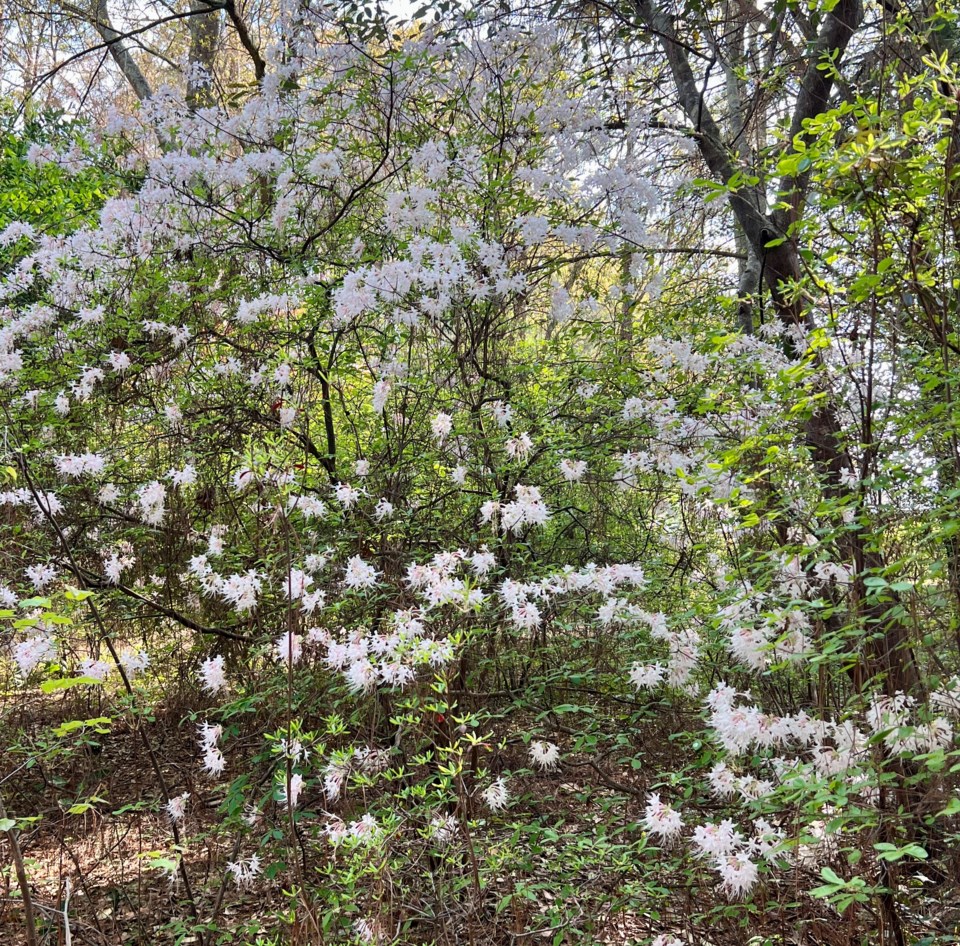
A big thanks to Joshua for sharing all this wonderful information! If you want learn more about native plants best for our region please contact The Botanic Garden. Follow The Botanic Garden on Facebook for glimpses of the garden and information about upcoming events.
Upcoming Spring Events at the Garden
Gather and Grow: "Bonsai!" is April 25th at 5:30. Shem Kendrick is a Board-Certified Master Arborist with the International Society of Arboriculture. Shem will guide you through the bonsai basics, including species selection, root/shoot pruning, and wiring techniques to create a miniature living tree art. Reserve your spot here.
The Spring Plant Sale is April 6th and 7th. Preview the sale here beginning March 29th.
Botanic Garden at Georgia Southern University
- Promotes knowledge and appreciation of the native plants and animals of the Southeastern Coastal Plain
- Enhances the quality of life through the region by presenting classes, events, concerts, festivals, and other cultural and historically driven opportunities that connect learners of all ages with the rich natural and cultural heritage of the region.
- Inspires environmentally responsible behavior by providing a sound scientific context and demonstrating sustainable practices while pursuing scientific, cultural, and creative solutions to environmental challenges.

